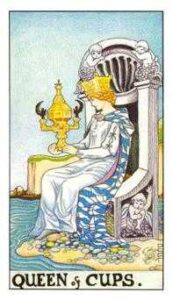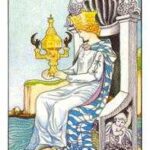![_CR21945[1]](http://jeanraffa.files.wordpress.com/2010/06/cr219451.jpg?w=300) As one of the best teachers I’ve ever had, my horse Shadow ranks right up there with Jung and my dreams. Horses, like dreams, are nature: they do not lie. People can cover their true feelings with masks, but horses do not know how to make masks. As animals of prey that have survived by being intensely alert and wary, they are easily unsettled by subtle signs of incongruence in people’s behavior. The tiniest gesture — a tentativeness in our stride, a sideways glance, a sudden intake of breath — can trigger prehistoric horsey images of predatory wolves clad in sheep’s clothing and cause them to spook.
As one of the best teachers I’ve ever had, my horse Shadow ranks right up there with Jung and my dreams. Horses, like dreams, are nature: they do not lie. People can cover their true feelings with masks, but horses do not know how to make masks. As animals of prey that have survived by being intensely alert and wary, they are easily unsettled by subtle signs of incongruence in people’s behavior. The tiniest gesture — a tentativeness in our stride, a sideways glance, a sudden intake of breath — can trigger prehistoric horsey images of predatory wolves clad in sheep’s clothing and cause them to spook.
One of the most amazing, and frustrating, things about horses is that they naturally mirror our emotions. If we are afraid, they will be afraid. If, beneath a calm exterior, we are irritable or angry, intense, anxious, or excitable, they will behave in accordance with the deeper reality. Shadow was especially good at this. And since I’ve always been good at ignoring uncomfortable feelings, together we were a Jungian analyst’s dream!
For example, the first time Shadow and I took a dressage test, I was vaguely aware of feeling nervous; but because I didn’t like the way that felt, I ignored it. Thirty minutes before my test was to take place, Liz, my trainer, told me to exercise him in the round pen. This is a training technique where you ask the horse to walk, trot, and canter around you in wide circles. This warms him up, reminds him of cues, bonds him with his trainer, consumes excess energy, and gives the trainer an opportunity to monitor his mood and correct inappropriate behavior. When Shadow started moving along the fence he couldn’t have looked more anxious; his movements were tentative and irregular and his eyes darted wildly from side to side as he looked over the fence to scan the horizon for danger. When I asked him to canter he raced around in the thick sand so quickly and recklessly that I was afraid he would fall and hurt himself.
Worried, I yelled “Whoa” louder and louder, but this only got him more stirred up. I tried rushing to the side of the pen with outstretched arms to stop him, but that only made him turn around and gallop away in the opposite direction. Then suddenly the veil dropped away and I saw the full extent of my own anxiety in his behavior. Immediately I stopped dead still in the center of the ring, closed my eyes, and began to breathe as slowly and deeply from my belly as I could. As I calmed myself, his response was immediate and dramatic. Within two turns around the ring his wild pace slowed to a canter. After a couple more turns he was trotting, a few more and he walked calmly toward me, stopped behind me, and touched his nose to my left shoulder. Whereas before my behavior had convinced him there was something to worry about, now he was equally convinced everything was fine.
This lesson affected me profoundly. Fifteen minutes with Shadow in that round pen brought home something I had not mastered after years of meditation: recognizing negative emotional states and rendering them harmless by returning to my quiet center. This skill is crucial to conflict resolution in everyday relationships. And can you imagine how different the world would be if everyone involved in international relations had a Shadow to show them their shadow?
What lessons has Our Lady of the Beasts taught you through your animal friends?

Living in a Culture That’s Lost Its Heart
“To learn how to fully live Eros makes a major contribution to the world around me, because this is a culture that’s lost its heart;



0 Responses
jeanie,
my wife and i raised an african grey parrot from one month old to nine years old before we found it a new home so we could travel. the african grey is generally considered the smartest animal in the world, next to human beings, mainly due to its linguistic abilities. rather than simply mimic what it hears, it learns language and then makes up its own words and grammar to actually communicate its thoughts, wishes, emotions, etc. they are also noted for their memory, which seems to works a lot like our own.
living with yoli all those years, we never really attempted to teach him to talk. it wasn’t necessary. he was always paying attention, learning what he wanted, piecing together his picture of how our language and actions fit together. then he would say something so relevant or so revealing that we would actually stand in awe, in wonder, at this tiny being straining against the bars of inter-species communication…..
my lessons were many and specific but can be consolidated into one meta-lesson: nature IS intelligence, nature IS emotion, and it is only my lack of sensitivity, my lack of attention, that keeps me from appreciating its meaning and intent.
one quick example. i would sometimes take him on a ride in the car. he would sit in the back seat, atop his cage, looking out the windows, and say, “Hello,” to every tree we passed. i have no idea where he got this idea but i began doing the same thing and found it completely altered the way i interacted with the world.
great post as always,
all my best,
william
William,
To your conclusion that “nature IS intelligence, nature IS emotion,” I say a resounding “Yes!” Through her repeating cycles and myriad images Mother Nature expresses the passion for life, never-ending creativity, natural benevolence, reverence for the multiplicity in unity, and meaning in matter which the ego needs to accept and experience to develop intimacy with the Beloved.
All she requires of us is that we listen to her messages with sensitivity and respond with reverence. This is how we commune with the Mystery. How simple. And how sad that it’s taking the human ego so long to understand that we’re abusing and destroying the very thing for which our souls hunger most. Will we get it before we destroy Her and ourselves?
Sounds like Yoli was a yogi. Saying hello to trees seems like a sacred practice to me!!
With gratitude and best wishes,
Jeanie